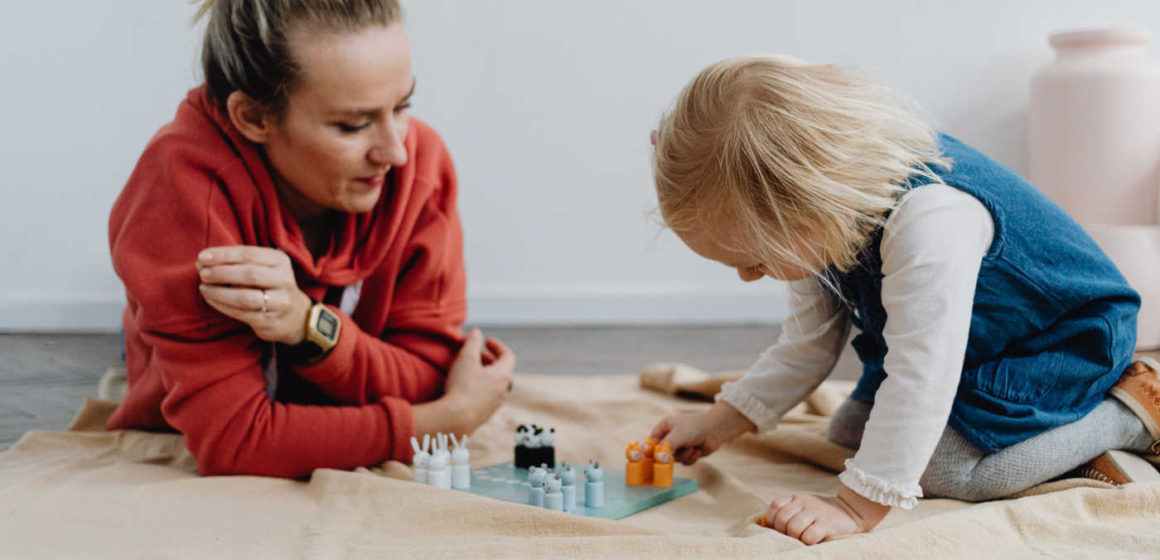Revolutionize Your Parenting Skills: The Ultimate Guide to Understanding PCIT!
Parent Child Interaction Therapy (PCIT) offers a transformative approach to addressing behavioral issues in young children, fostering improved communication and connection between parents and their little ones.
This evidence-based treatment has shown remarkable success in promoting positive behavior changes while strengthening the parent-child bond. In this comprehensive guide, we will delve into the fundamentals of PCIT, exploring its process, techniques, benefits and how it can be used as an effective tool for enhancing family dynamics.
Key Takeaways
- Parent Child Interaction Therapy (PCIT) is an evidence – based treatment that focuses on improving the relationship between caregivers and young children with behavioral problems by addressing the underlying dynamics between them.
- PCIT consists of Child-Directed Interaction (CDI), Parent-Directed Interaction (PDI), and a combination of both, which are taught to parents in the assessment and treatment phases.
- Through PCIT’s PDI training, parents learn effective communication skills that help manage difficult emotions and improve overall family dynamics.
- Parents who participate in PCIT learn a variety of skills and techniques that can help them manage problematic behaviors in their children, improve communication, and strengthen the parent-child relationship.
What Is Parent Child Interaction Therapy (PCIT)?
Parent Child Interaction Therapy (PCIT) is an evidence-based treatment that focuses on improving the relationship between caregivers and young children with behavioral problems by addressing the underlying dynamics between them.
Definition And Key Principles
Parent-Child Interaction Therapy (PCIT) is a specialized, evidence-based treatment that focuses on enhancing the quality of the relationship between caregivers and their young children with behavioral problems.
The core objective of PCIT is to empower parents by providing them with specific tools and techniques to manage their child’s challenging behaviors effectively.
The first principle revolves around strengthening the parent-child bond through play, promoting positive behaviors in children. For example, parents are coached to use praise, reflection, and engagement during playtime to reinforce desired actions while ignoring unwanted behavior.
The second principle emphasizes teaching parents clear communication skills so they can set appropriate limits for their children’s disruptive behaviors confidently, such as implementing time-outs or offering choices instead of threats or punishments.
Evidence-based Treatment For Behavioral Problems In Young Children
Parent Child Interaction Therapy (PCIT) is an evidence-based treatment for young children with behavioral problems. The therapy has been extensively researched and proven to be effective in addressing challenging behaviors such as defiance, aggression, and ADHD symptoms.
Unlike traditional therapies that only focus on the child’s behavior, PCIT takes a family-centered approach that involves both the child and their caregiver.
Research studies show that PCIT is one of the most promising treatments available for children experiencing emotional or behavioral difficulties. It provides long-lasting results by targeting not just symptoms but also underlying issues between caretakers and children.
Through its manual-based program, it teaches parents how to address problematic behaviors through selective attention, reflection, praise encouragement, time-outs among other techniques .
In conclusion, if your young child is struggling with difficult behaviors such as acting out or displaying intense emotions frequently; Parent Child Interaction Therapy could provide significant benefits for you and your family through finding a qualified therapist who will guide you throughout the assessment process until treatment ends. By taking an active role in your child’s therapy journey , you are making meaningful strides in helping him/her develop healthy ways of coping while strengthening your connection overall as caregivers-parents-child relationships are improved. We highly recommend considering this approach when seeking evidence-based treatment options for childhood behavioral problems.
Goals Of PCIT
The goal of PCIT is to improve the parent-child relationship and decrease problematic behaviors in young children. It focuses on strengthening communication skills between caregivers and their children, providing parents with effective discipline techniques, and teaching children how to regulate their emotions.
Through the use of evidence-based treatments for children with behavior problems like ADHD or oppositional defiant disorder, caretakers also learn how to address their own emotions during therapy sessions.
The therapy emphasizes building a strong bond between parent and child while decreasing undesirable behaviors through differential attention and reflection methods.
How PCIT Works: Components And Process
PCIT consists of Child-Directed Interaction (CDI), Parent-Directed Interaction (PDI), and a combination of both, which are taught to parents in the assessment and treatment phases.
Child-Directed Interaction (CDI)
Child-Directed Interaction (CDI) is an essential aspect of Parent Child Interaction Therapy (PCIT). During CDI, the parent follows the child’s lead to create a positive and nurturing environment.
In this phase, parents are encouraged to participate in activities that their children enjoy while offering them undivided attention. For example, if your child enjoys playing with dolls or action figures, you can join in on the fun by asking questions about what they’re doing or pretending to be one of the characters.
By giving children unlimited time for play and allowing them to choose their activity enhances their self-esteem while also improving social skills.
Parent-Directed Interaction (PDI)
Parent-Directed Interaction (PDI) is an important part of Parent Child Interaction Therapy (PCIT). In this phase, parents are coached in specific techniques to provide clear and consistent commands while increasing positive interactions with their child.
For example, a therapist might instruct a parent to use selective attention by praising the child when they follow instructions or show desirable behavior while withholding attention when they exhibit undesirable behaviors.
PDI is essential because it helps parents establish a secure and positive relationship with their child. It gives them strategies for successful interaction so that discipline becomes more natural and experiences less resistance from children.
Combination Of CDI And PDI
During Parent Child Interaction Therapy (PCIT), caregivers learn two different ways to interact with their child: Child-Directed Interaction (CDI) and Parent-Directed Interaction (PDI).
CDI is where the focus is on letting the child take the lead in playtime while the caregiver follows, getting down on the child’s level and engaging in their preferred activities.
PDI involves more structure, with caregivers giving clear instructions and setting limits for their child’s behavior.
The combination of both CDI and PDI helps create a balanced dynamic between parent and child, allowing for positive reinforcement during playtime while also teaching necessary discipline techniques.
Throughout PCIT, parents are taught when to use each technique based on their individual situation.
Assessment And Treatment Phases
PCIT incorporates two assessment phases to diagnose and treat children experiencing problematic behaviors. Here are the details of the assessment and treatment phases for your understanding:
- Child – Directed Interaction (CDI) Assessment Phase
- This phase helps therapists identify patterns of behavior exhibited by both child and caregiver.
- The therapist will observe the child and caregiver’s interaction through one – way mirrors or cameras while providing live coaching.
- The therapist will use an earpiece to coach the caregiver in employing positive reinforcement techniques.
- During this phase, caregivers learn how to increase positive attention toward their child.
- Parent – Directed Interaction (PDI) Assessment Phase
- In this phase, the therapist coaches caregivers to use specific discipline techniques while playing with their child.
- The therapist observes how parents respond to unwanted behaviors and then teaches new parenting strategies.
- Caregivers learn how to give their child clear instructions without yelling, threatening, or using physical force.
After completing these assessments, caregivers move on to treatment sessions that incorporate both CDI and PDI components.
Skills And Techniques Taught To Parents
Parents who participate in Parent Child Interaction Therapy (PCIT) learn a variety of skills and techniques that can help them manage problematic behaviors in their children, improve communication, and strengthen the parent-child relationship. Here are some of the key skills and techniques taught in PCIT:
- Positive attention: Parents are taught to give specific praise and attention for positive behaviors they want to see more of in their child.
- Differential attention: This technique involves ignoring minor misbehaviors while immediately addressing major ones.
- Reflection: Parents are trained to reflect back what their child is saying to show that they are listening and to encourage their child to communicate further.
- Time-outs: Parents are taught how to use time-outs effectively as a way to help children calm down when they are upset or engaging in problematic behaviors.
- Selective attention: Caregivers learn how to increase the amount of time they spend interacting positively with their child while decreasing the amount of time spent responding negatively.
- Teaching new skills: Parents learn how to teach their children new skills such as following directions, making transitions smoothly, and expressing emotions appropriately.
- Parent-directed interaction (PDI): This technique involves parents directing the play activities with their child, giving clear instructions, and providing immediate feedback for appropriate behavior.
- Child-directed interaction (CDI): During CDI sessions, parents follow the lead of their child while playing and provide praise and attention for appropriate behaviors.
- Establishing routines: Parents are helped with setting up structured routines for specific times during which children generally struggle.
- Modeling positive behavior: Finally, parents learn how modeling certain positive behaviors could affect positively on children’s own behavior patterns.
Overall, these techniques provide parents with practical tools for managing challenging behaviors in young children while building a positive relationship with them through play-based interactions.
Who Can Benefit From PCIT?
PCIT can benefit children with behavioral problems and parents who are struggling with parenting, regardless of their cultural background.
Children With Behavioral Problems
If your child displays defiant behaviors, has trouble following instructions, or struggles with controlling their emotions, Parent Child Interaction Therapy (PCIT) may be an effective form of treatment.
PCIT has been proven to help young children with behavioral problems learn the necessary skills to regulate and address their feelings. The therapy also teaches parents specific discipline techniques that can be used at home to help children listen and follow directions.
Parents Experiencing Difficulties With Parenting
Being a parent can be challenging, and it’s normal to encounter difficulties along the way. Parent Child Interaction Therapy (PCIT) can help parents who are experiencing difficulties with parenting.
PCIT focuses on teaching specific parenting techniques designed to improve the relationship between caregivers and their children.
Through PCIT, parents learn how to communicate more effectively with their children and understand their emotions better. This therapy provides guidance on how to manage challenging behavior such as tantrums and defiance while also maintaining a positive attitude towards discipline.
Cultural Considerations
It’s important to note that cultural background can have a significant impact on parenting styles and interactions with children. In PCIT, mental health professionals take into account the cultural context of both the caregiver and child when developing treatment plans.
Furthermore, language barriers or differences in cultural norms and beliefs related to discipline could potentially impede effective communication between parent and therapist.
In addition, caregivers should feel comfortable discussing any concerns regarding the therapy within the context of their culture. This includes openly discussing possible conflicts between traditional methods of discipline versus Western approaches used in PCIT.
Overall, understanding cultural considerations is crucial when implementing PCIT as it ensures that therapists provide comprehensive care catered towards individual needs while respecting diversity amongst various populations receiving services.
The Importance Of Evidence-Based Treatment And Finding A Qualified PCIT Therapist
Research supports the effectiveness of PCIT, making it crucial for parents to find a qualified therapist trained in manual-based behavior therapy to ensure their child receives evidence-based treatment.
Research Supporting The Effectiveness Of PCIT
Studies have shown that Parent Child Interaction Therapy (PCIT) is an effective treatment for young children with behavioral problems. According to numerous research papers, the therapy has a significant positive impact on reducing problematic child behaviors and improving parent-child relationships.
Another important finding was that the benefits of PCIT lasted even after the therapy sessions ended.
Moreover, some studies have suggested that parents who took part in PCIT experienced positive outcomes such as a decrease in depressive symptoms. These results suggest not only tangible improvements but also emotional ones within family dynamics, which can further promote healthy interactions between parent/caretaker and child.
How To Find A Qualified PCIT Therapist
If you are interested in finding a qualified PCIT therapist for your child, here are some tips to help you get started:
- Ask for recommendations from your child’s pediatrician or mental health professional.
- Conduct an online search for therapists in your area who specialize in PCIT.
- Look for therapists who have completed specialized training and certification in PCIT.
- Check the therapist’s credentials and licensure to ensure they are qualified to provide therapy services.
- Read reviews and testimonials from other parents who have worked with the therapist.
- Contact the therapist directly to ask about their experience working with children and families, as well as their approach to therapy.
- Consider scheduling a consultation appointment to meet with the therapist and determine if they are a good fit for your family.
Remember that finding the right therapist is important for achieving positive outcomes in therapy. It may take time and effort to find a qualified PCIT therapist, but it is well worth it for your child’s emotional wellbeing and behavioral development.
Techniques Used In PCIT
PCIT uses selective attention, reflection, praise, and time-outs as techniques to improve child behavior.
Selective Attention
In Parent Child Interaction Therapy (PCIT), selective attention is a technique that helps children understand the importance of positive behavior and encourages them to follow directions.
This method involves withholding attention from undesired behaviors while giving immediate attention to desirable ones. For example, if a child throws a tantrum for a toy in the mall and their parent ignores it until they calm down, the child learns that throwing tantrums will not lead to getting what they want.
On the other hand, if the child follows instructions or behaves positively, parents can praise and encourage them right away.
Research shows that PCIT is an effective treatment option for children with behavioral problems like ADHD and oppositional defiant disorder. The therapy emphasizes positive reinforcement techniques like selective attention which complement one another well alongside teaching caretakers communication skills, discipline techniques, and emotion regulation strategies useful in everyday lives.
Differential Attention
During PCIT, differential attention is a technique that teaches caregivers to only give attention and praise when their child shows desirable behaviors. This means ignoring undesired behaviors such as whining or tantrums and waiting for the child to display positive actions before acknowledging them.
Differential attention helps children learn what is expected of them and also reinforces good behavior by rewarding it with attention.
Differential attention can be difficult at first because caregivers may feel like they are not addressing negative behavior but it is an essential step towards decreasing problematic behaviors in children during therapy sessions.
Reflection
Reflection is a crucial component of Parent Child Interaction Therapy (PCIT) that focuses on building parents’ communication skills with their children. In this technique, the therapist encourages the parent to reflect back on what they have observed about their child’s behavior and emotions during an interaction.
For example, if a child is upset over something minor, instead of dismissing it or trying to distract them, reflecting on their emotions and vocalizing them might be helpful.
Through reflection techniques in PCIT therapy sessions, parents also learn how to validate their children’s emotional experiences while setting appropriate boundaries for negative behaviors.
Praise And Encouragement
In PCIT, praise and encouragement are powerful tools to help children develop positive behaviors. It is important for parents to learn how to use these techniques effectively.
Praise should be specific and focus on the child’s effort rather than just the outcome. For example, saying “Good job putting away your toys” rather than just “Good job” helps reinforce the specific behavior that you want your child to repeat in the future.
Encouragement can also be effective in helping children build self-confidence and motivation.
Time-Outs
Time-outs are a widely used technique in PCIT to manage child behavior. The goal of time-outs is to provide children with a brief period of physical and emotional separation from the caregiver when they engage in undesirable behaviors.
To implement a time-out, the parent first needs to establish specific rules for timeout situations. These should include what types of behaviors will result in timeouts as well as how long they will last.
One cautionary note: research has shown that overly harsh or extended timeouts can actually increase behavioral problems over time.
Conclusion
Parent Child Interaction Therapy (PCIT) is an evidence-based treatment for young children with behavioral problems. It focuses on the relationship between caregivers and children, teaching specific discipline techniques to handle emotions and problematic behaviors.
PCIT emphasizes positive reinforcement and caregiver abilities to understand their child’s emotions. This therapy can be helpful for children with ADHD, oppositional defiant disorder, and other behavioral difficulties.
Finding a qualified therapist who follows PCIT protocols is key to success in this type of therapy.
FAQs:
- What is Parent Child Interaction Therapy (PCIT) and how does it work?
PCIT is a type of therapy aimed at improving the relationship between parents and their children by increasing positive behaviors and reducing negative interactions. It involves coaching sessions where the therapist observes through a one-way mirror or video camera while giving feedback on interaction techniques as they occur in real-time, allowing for immediate skill-building.
- Is PCIT suitable for all families?
While PCIT can be helpful for many families, it may not be an appropriate treatment option for those with severe mental health issues that require more intensive interventions. Families that struggle with trauma exposure or ongoing stressors impacting daily functioning should also consider alternative approaches better suited to address underlying factors contributing to challenges within the family system.
- How long does PCIT typically take to see results?
The length of time before seeing significant improvement varies depending upon individual circumstances and progress being made week-to-week during therapy sessions but most client cases report notable improvements after 8-16 weeks of regular attendance when actively practicing therapeutic skills at home as well.
- Can I participate in PCIT if my child has special needs?
Yes! One major benefit of PCIT is its adaptability based on each family’s unique circumstances – including those where children have developmental delays, disabilities, or other special needs which could impact their ability to engage in traditional talk-therapy models without support from specialized professionals trained specifically around working within these types settings & populations effectively over time.
General Facts
- PCIT is an evidence-based treatment for young children with behavioral problems.
- The therapy focuses on the behavior and interaction between caregivers and children.
- It is designed to help caretakers of children deal with emotions and problematic behaviors.
- PCIT teaches parents specific discipline techniques to help children listen to instructions and follow directions.
- The therapy decreases problematic child behaviors by teaching them to regulate and address their feelings.
- PCIT is widely respected and addresses both the child’s difficulties and the underlying dynamics between the child and caregiver.
- This therapy emphasizes caregivers’ abilities to understand their children’s emotions.
- The therapy is conducted in a one-on-one setting with the caregiver and child and emphasizes positive reinforcement.
- PCIT can be helpful for children with ADHD, oppositional defiant disorder, and other behavioral problems.
- The therapy has specific protocols and techniques that are outlined in various resources such as handouts and PDFs.
Source URLs
https://www.pcit.org/what-is-pcit.html
https://www.childwelfare.gov/pubPDFs/factsheets_pcit.pdf
https://wellnesspsychologicalservices.com/understanding-parent-child-interaction-therapy/
https://jamanetwork.com/journals/jamapediatrics/fullarticle/2801808
https://www.cebc4cw.org/program/parent-child-interaction-therapy/detailed

Dr. O “TheTeenDoc.” helps clinicians communicate better with their teen patients. She speaks, blogs www.TheTeenDoc.com, researches and consults on communicating with teens. She has written two e-books for parents and teens on communicating about the challenging subject of sexual health. You know, teens that bring chief complaints of belly pain, social crisis, emotional turmoil and obnoxious parents. Or, is it the parents with obnoxious teens? Sometimes she mixes that complaint up.
Dr. O speaks www.TheTeenDoc.com to and is consulted by clinicians who want advice managing difficult teen and teen-parent situations. These situations frustrate clinicians and slow down their clinics making them wonder if they’ll ever walk out the door for the day. Every day, in her own practice, Dr. O helps clinicians communicate better with teens and helping you is another level of reward. Her talks are fun and informative, and her delivery empowers clinicians to actually think teens are an awesome group to work with. Her energy about teens is contagious and has inspired her coaching clients to have less fear and more confidence with the teens in their panel. Her dedication to seeing you succeed with a group she is so passionate about is what makes Dr. O’s Lounge the place you want to be!
If you are a clinician that has teen’s in your practice, from pediatrics to internal medicine, the person with whom you need to connect is Dr. O “TheTeenDoc!” You can listen to a complimentary audio “The Art of Teen Medicine” and recommend her e-book “Are You Serious? It’s Just Sex!” to your patients. And while you’re there, become part of Dr.O’s Lounge.
Specialties: consulting, coaching, counseling, mental health, research, seminars, spanish, public speaker, teaching, communications between teens and adults



